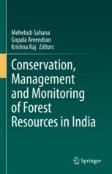Search
Search Results
-
A pattern of livestock depredation by snow leopard to the yak herding pastoralist in western Bhutan
The pastoralists co-exist with wild predators and livestock depredation by predators causes an immense impact on the livelihood of the herders and...

-
Spatial dynamics of human-hyena conflicts in villages surrounding Mkomazi National Park, Tanzania
This study investigated the dynamics of perceived livestock depredation over the last 2 years (from 2021 to 2022) in villages close to Mkomazi...

-
Pastoral practices, pressures, and human-wildlife relations in high altitude rangelands of eastern Himalaya: A case study of the Dokpa pastoralists of North Sikkim
The pastoral practices of the Dokpa herders of North Sikkim have been transforming in response to the geo-political and socio-economic changes in the...

-
Livestock depredation by snow leopard and Tibetan wolf: Implications for herders’ livelihoods in Wangchuck Centennial National Park, Bhutan
Human-wildlife conflict (HWC) is a serious problem in many parts of the world, and Bhutan’s Wangchuck Centennial National Park (WCNP) is no...

-
Assessment of Different Aspects of Elephant Depredation at a Rural Society-Protected Area Interface in Northeast India Based on Public Estimation
Asiatic elephants have been involved in severe conflicts with the people residing in the fringes of Abhaypur Reserve Forest, Northeast India. An...
-
Socio-ecological Challenges and Adaptation Strategies of Farmers Towards Changing Climate in Vindhyan highlands, India
The Indian agriculture is highly vulnerable to climate change which adversely affects crop production and livelihood of farmers. The effect is more...

-
Changing Landscape and Escalating Human-Wildlife Conflict: Introspection from a Transboundary Landscape
The Kangchenjunga Landscape (KL), a transboundary area shared by Bhutan, India, and Nepal, identified human-wildlife as a cross-border issue. Diverse...
-
Issues of Biodiversity Conservation and Conflict in Gorumara National Park, West Bengal, India
Gorumara National Park (GNP) in Eastern India is a vastly diverse ecosystem with various habitats and therefore has high floral and faunal diversity....
-
Human–nature relationships: An introduction to social–ecological practice theory for human–wildlife interactions
Conservation science requires a balance of social and ecological perspectives to understand human–wildlife interactions. We look for an integrative...

-
Mercury exposure of tidal marsh songbirds in the northeastern United States and its association with nest survival
The biogeochemistry of tidal marsh sediments facilitates the transformation of mercury (Hg) into the biologically available form methylmercury...

-
Assessing Human-Wildlife Conflicts in Tiger Corridor Habitat: A Case Study of Ranthambhore Tiger Reserve, India
Human-wildlife conflict is a very common phenomenon in any protected area. Man-environment relationship research has been conducted on human-wildlife...
-
Economics of rewilding
Rewilding, a concept often defined as an open-ended approach to ecological restoration that aims to establish self-sustaining ecosystems, has gained...

-
Evidence of deep-sea interactions between toothed whales and longlines
Toothed whales (odontocetes) feeding on fish caught on hooks in longline fisheries is a growing issue worldwide. The substantial impacts that this...

-
Map** and analyzing human–wildlife conflicts communication network to promote conservation success in protected areas: evidence from Nepal
Protected areas (PAs) play a vital role in biodiversity conservation. Their role and importance in promoting sustainable livelihoods through...

-
Awareness of environmental legislation as a deterrent for wildlife crime: A case with Masaai pastoralists, poison use and the Kenya Wildlife Act
Illegal wildlife crime is a global phenomenon, accelerating the ongoing biodiversity crisis. In the Old World, and particularly in Africa, illegal...

-
Climate change as a global amplifier of human–wildlife conflict
Climate change and human–wildlife conflict are both pressing challenges for biodiversity conservation and human well-being in the Anthropocene....

-
Human–Wildlife Conflict: The Case of Crop Raiding and Its Socio-economic Implications Around Pendjari Biosphere Reserve, Northern Benin
Human–wildlife conflict is becoming a serious threat for both wildlife conservation and human well-being. Its main representations are livestock...
-
Trouble in Paradise: Evaluating the Effects of Unorganized Tourism on the Himalayan Ecology
The Indian Himalayan Region (IHR) has drawn visitors and pilgrims from all over the world due to its towering peaks, majestic landscapes, rich...
-
Assessing the Effectiveness of a Community-based Livestock Insurance Program
Financial mechanisms to mitigate the costs of negative human–carnivore interactions are frequently promoted to support human coexistence with...

-
Plasma Degradation of Synthetic Dyes
Most of the dyes are harmful to the environment due to their high toxicity. The elimination of synthetic dyes is the most difficult task before...
